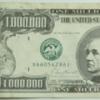Hi there,
I'm engraving pretty detailed pieces with a 150w Boss HP-5598. Whenever I search cleaning wood after engraving, all of the resources pertain to removing unwanted char/burn marks. However, I can't find anything on removing dust from pieces after laser engraving. I've tried vacuuming, wiping down with water or vinegar, covering the wood with tape while engraving (completely useless for this purpose), and the most effective method I've found is hitting pieces with compressed air. However, I still end up with saw dust lodged in the finer details, which really impacts the aesthetic.
Does anyone have any tips/methods for removing saw dust from engraved wood, or preventing dust from settling into it in the first place?
Thanks.




 Reply With Quote
Reply With Quote




